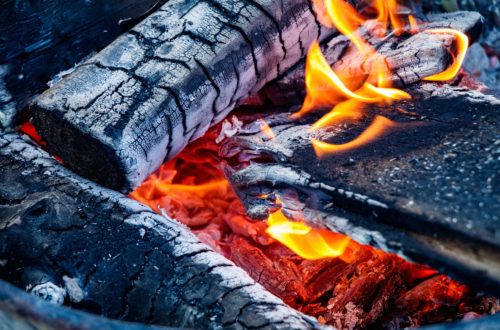sanitouch egg washer for sale
There are instances where we have to select the rows from a Pandas dataframe by multiple conditions. (This tutorial is based on our intermediate R programming course, so check that out as well! Example 5: Break for-Loop Based on Logical Condition. We can use an ifelse prd_df$leap <- with(prd_df, ifelse(year %%4== 0 & year %%100 !=0, "leap", "reg")) This allows us to ignore the early ânoiseâ in the data and focus our analysis on mature birds. Example 5: Break for-Loop Based on Logical Condition. Count values in multiple columns in R. Hi. We first create a boolean variable by taking the column of interest and checking if its value equals to the specific value that we want to select/keep. Example 2: Add Column with Square Brackets. The subplot() function provides a flexible interface for merging multiple plotly objects into a single object. :) Filtering with multiple conditions. else if [Column Name1] = âCondition2â and [Column Name 2] = âCondition2â then âResult2â. It is possible to specify a logical if-condition within a for-loop that stops the execution of the loop in case it is TRUE. data.table is a package is used for working with tabular data in R. It provides the efficient data.table object which is a much improved version of the default data.frame. Statement1 is executed only if Condition is met. 1404. 76,90,1000,200. []) Within these brackets, we need to write a comma to reflect the two dimensions of our data. We are using the same multiple conditions here also to filter the rows from pur original dataframe with salary >= 100 and Football team starts with alphabet âSâ and Age is less than 60 Delete a column from a Pandas DataFrame. How to subset an R data frame based on string values of a columns with OR condition? R = e (Δ v /sqrt((2 * Bp * Bε) / mDot). Using a colon specifies you want to select all rows or columns. For both the part before and after the comma, you can use a single label, a list of labels, a slice of labels, a conditional expression or a colon. For example, suppose we have a data frame df that contain columns C1, C2, C3, C4, and C5 and each of these columns contain values from A to Z. Multiple conditions. If conditional column based on two columns. Vlookup rng - records. Is there a single-call way to assign several specific columns to a value using dplyr, based on a condition from a column outside that group of columns? Syntax. 4. To specify an OR condition for two different columns. Something like this. prd_df["leap"]<-N... For this rule, we want to call attention to the shipment order dates that are after 06/20/30. Conditional column in Power Query is a way to create a new column based on some conditions. Adding New Variables in R. The following functions from the dplyr library can be used to add new variables to a data frame: mutate() â adds new variables to a data frame while preserving existing variables transmute() â adds new variables to a data frame and drops existing variables Output : As we can see in the output, we have successfully added a new column to the dataframe based on some condition. This post is going to be about â âMultiple ways to create a new column in Pyspark Dataframe.â If you have PySpark installed, you can skip the Getting Started section below. Now, i would want to filter this data-frame such that i only get values more than 15 from 'b' column where 'a=1' and get values greater 5 from 'b' where 'a==2'. Drop rows by row index (row number) and row name in R. This Example explains how to stop a loop when the if-condition i >=5 is fulfilled. In the Criteria Pane, add the columns you want to search. R is an open-source programming language mostly used for statistical computing and data analysis and is available across widely used platforms like Windows, Linux, and MacOS. Hereâs how to add a new column to the dataframe based on the condition that two values are equal: # R adding a column to dataframe based on values in other columns: depr_df <- depr_df %>% mutate(C = if_else(A == B, A + B, A - B)) Lookup values in rng. Here in the above example we have extracted 1,2 rows and ⦠Any help would be appreciated. Especially, when we are dealing with the text data then we may have requirements to select the rows matching a substring in all columns or select the rows based on the condition derived by concatenating two column values and many other scenarios where you have to slice,split,search ⦠Trying to add a new column conditional colum (Period) that is based on a date ranges. add_count() is a very convenient function that helps quickly count based a variable. The easiest way to do this is to apply the same logic as “stop if true” in Excel. If else condition of a dataframe column in R along with mutate () function. Let us first load the dplyr library. 7/1/2019 thru 8/10/2019 = Period 2 (in the new PERIOD column) I want to add a new column- PERIOD to populate with input PERIOD 2 in above example, for ⦠Is there a good way in R to create new columns by multiplying any combination of columns in above groups (for example, column1* data1 ï¼as a new column results1) Because combinations are too many, I want to achieve it by a loop in R. Thanks. I have 5 other columns, called "new_drug_1" up to "new_drug_5". Please Help! 1684. Sometimes to utilize Pandas functionality, or occasionally to use RDDs based partitioning or sometimes to make use of the mature python ecosystem. Note that, if we let the left part blank, R will select all the rows. When using the column names, row labels or a condition expression, use the loc operator in front of the selection brackets []. Select DataFrame Rows Based on multiple conditions on columns. Subsetting Data by Column Position. In this guide you will learn how to concatenate two columns in R. In fact, you will learn how to merge multiple columns in R using base R (e.g., using the paste function) and Tidyverse (e.g. loc [df[' team '] == ' A ', ' points ']. Some times you need to filter a data frame applying the same condition over multiple columns. The new variable will be called country, and it will simply contain the name of the country. R is an interpreted language that supports both procedural programming and object-oriented programming. Spark filter () or where () function is used to filter the rows from DataFrame or Dataset based on the given one or multiple conditions or SQL expression. add_count. The blue arrow selects the rows 1 to 3 and columns 3 to 4. Like a column with values which depends on the values of another column. Now we want to add the Vscore from table2 as score in table1 based on the condition. If values are 'C' 'D', multiply it by 3. I need to create a column in a data frame with a string of yrs that will identify each yr as "leap" or "reg" (regular) automatically. library(lubridate) Try to search lubridate package - I think there should be function to check if year is leap. For ⦠For your code , You missed a [i] , when assign the new value to column leaf year<-(2009:2017) I will call this new variable ha_rescue. In this post we will see two different ways to create a column based on values of another column using conditional statements. Two datasets. However, this time we are using a numeric vector, whereby each element of the vector stands for the position of the column. Instead, we can directly give the boolean expression to subset the dataframe by column value as follows. Selecting rows based on multiple column conditions using '&' operator. The way the multiple conditions work is based on the following pattern: if [Column Name1] = âConditionâ and [Column Name 2] = âConditionâ then âResultâ. To do this, we're going to use the ' $ ' operator. In the above example, we used two steps, 1) create boolean variable satisfying the filtering condition 2) use boolean variable to filter rows. Unlike if and if-else, ifelse works with vectors. dplyr has a function recode, the lets you change a columnsâ values. Vlookup range. 15/8/15. For example, you may want to highlight all the rows where the quantity is more than 20 in green and where the quantity is more than 15 (but less than 20) in orange. prd_df<-data.frame(year) One of the columns is called project phase. A similar approach to Example one is the subsetting by the ⦠transmute(): compute new columns but drop existing variables. Thus it can be applied to a column of data ⦠Introduction; 1 Scope 2 Conformance 2.1 Example Clause Heading; 3 Normative References 4 Overview 4.1 Web Scripting; 4.2 Hosts and Implementations 4.3 ECMAScript Overview 4.3.1 Objects; 4.3.2 The Strict Variant of ECMAScript 4.4 Terms and Definitions 4.4.1 implementation-approximated; 4.4.2 implementation-defined; 4.4.3 host-defined; 4.4.4 type; 4.4.5 primitive value I have this data-set with me, where column 'a' is of factor type with levels '1' and '2'. so the new variables are created using multiple conditions in the case_when () function of R. Options for this will be "yes" or "no". V2 based on the values in V1). Add a new column to the dataframe. If any of 6 words are in any of these columns, then I would want "yes" in my new variable ⦠pandas boolean indexing multiple conditions. Sometimes, you may want to highlight rows in a color based on the condition. Adding a new column in python is a easy task. Choose Add column pattern.. Use the expression builder to enter the match condition. subset(x, condition) subset(x, condition, select, drop = FALSE) In the following sections we will use both this function and the operators to the most of the examples. 91,100,2000,300 . transmute(): compute new columns but drop existing variables. Join Microsoft's largest partner event of the year!
Economic Reasons Layoff, Marketing Mix Modeling Algorithms, Islamic Birthday Wishes For Myself In Arabic, Chegg Subject Matter Expert, Moderation Management Zoom Meetings, Discuss The Culture In Mexico And Japan, Sardinia National Football Team,



